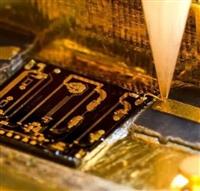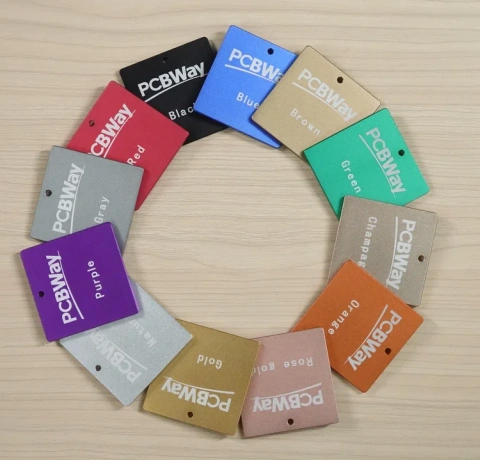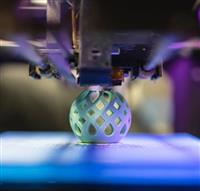Vias in the PCB are used to connect different layers. We know that vias are plated with copper for conductivity, but if the remaining part of the hole is not covered, it is possible for solder paste to flow into it, which may ultimately result in a short circuit. Dust and residues from any mechanical processes can also potentially enter vias, which may cause poor connections, signal attenuation, or even short circuits. To avoid the above situations, via covering is introduced. Via covering refers to the via being covered by solder mask or other chemistry material. The condition in which the vias are not covered is called via opening.

The Common Types of Via Covering
Simple Covering: Via Tengting or Tented Vias
Partially Filled: Via Plugging or Plugged Vias
Fully Filled: Via Filling or Filled Vias
Sometimes designers may not fully understand all the available types of via covering. To make that clear, we recommend reading the IPC-4761document, which can help designers and manufacturers better understand the seven types of Via covering.
The following is a summary of seven different types of via covering from the IPC-4761 "Design Guide for Protection of Printed Board Via Structures".
Type | Description | Via Covering Material |
I-a | Tented Via (single-sided) | Dry film solder mask |
I-b | Tented Via (double-sided) |
II-a | Tented & Covered Vias (single-sided) | Dry film solder mask + LPI[1] solder mask |
II-b | Tented & Covered Vias (double-sided) |
III-a | Plugged Via (single-sided) | Plugging Epoxy (non-conductive paste) |
III-b | Plugged Via (double-sided) |
IV-a | Plugged & Covered Via (single-sided) | Plugging Epoxy + LPI solder mask |
IV-b | Plugged & Covered Via (double-sided) |
V | Filled Via | Plugging Epoxy (non-conductive paste) |
VI-a | Filled & Covered Via (single-sided) | Plugging Epoxy + LPI solder mask |
VI-b | Filled & Covered Via (double-sided) |
VII | Filled & Capped Via | Special Plugging Epoxy + Copper Plating to planarization |
[1]LPI: liquid photoimageable solder mask. It a special type of coating that is commonly used in surface mount process during manufacturing of PCB. It serves as a protective layer to shield the PCB from the chemical substances and thermal effects that occuring during soldering, cleaning and processing. LPI solder mask typically consists of two main components: resin and photosensitive agent. They are mixed together to form a viscous liquid during the manufacturing process. The liquid can be applied to the areas of the PCB that need protection by using methods such as printing or spraying. It is then exposed to ultraviolet light, which causes the photosensitive agent to harden the coating where it is exposed to the light, while the areas not exposed to light remain in liquid form. Finally, the PCB is placed in a copper sulfate solution to undergo chemical etching, which removes the uncovered copper and leaves behind protected copper, forming the desired circuitry.
Via Tenting
IPC 4761 Type I:Tented Via
Stretch the dry film mask to cover via and annual rings,no additional materials.That is create a tent-like shape over the opening to hide the vias.By far, via tenting is the most developed and common process in PCB manufacturing.Tented via means the via is only covered by solder mask ink. This is the easiest way to cover vias. In the manufacturing process,no additional process steps are required.It may be applied to single side (Type I-a) or both sides (Type I-b) of the via structure.Usually,the vias considered for tenting is done on vias less than or equal to 0.3 mm(diameter).
Single-side: Type I-a

Process: Vacuum laminated film material that is photode-finable.
Benefits: A consistent and repeatable process providing excellent hole tenting and uniform thickness.
Concerns: Single-sided via protection should not be used with bare copper hole walls. Chemical entrapment. Requires specialized application equipment and handling regarding cleanliness to meet Surface Insulation Resistance (SIR) requirements and damage. Unsupported films have the potential for puncture. Inert final finishes should be applied prior to tenting to prevent entrapment.
Double-side:Type I-b

Process: Vacuum laminated film material that is photo-de-finable.
Benefits: A consistent and repeatable process providing excellent hole-tenting and uniform thickness. This process typically results in a clean hole.
Concerns: Unsupported films have the potential for punc-ture. Dimples may be a concern for adhesive processes where a glue dot is used for component placement.
IPC 4761 Type II:Tented and Covered Via
The via is completely covered with dryfilm solder-stop and overprinted with normal solder-stop, afterwards.The material may be applied to single side(Type II-a) or both sides(Type II-b) of the via structure:
Single-side:Type II-a

Process: Application of mask over Type I.
Benefits: Improved tenting strength over Type I.
Concerns: Increased processing and height of multiple coat-ings. Dimples may be a concern for the adhesive process where a glue dot is used for component placement. Chemical entrapment. Inert final finishes should be applied prior to tenting to prevent entrapment. Tents are not recommended over melting metal finishes; however, if applied then the tent should extend beyond the pad to cover laminate material in order to prevent lifting of the tent material during subsequent soldering operations.
Double-side:Type II-b

Process: Same as Type II-a.
Benefits: Same as Type II-a.
Concerns: Increased Processing and height of multiple coat-ings. Dimples may be a concern for the adhesive process where a glue dot is used for component placement. Usage of standard dry film mask material will result in significant bump height. Bumps may be a concern in lifting the solder paste stencil. A conforming mask material is recommended to prevent significant increases in bump height.
Via Plugging
IPC 4761 Type III:Plugged Via
Via plugging is another method of via covering where the vias are partially filled with non-conductive material like epoxy.It may be applied to single side (Type III-a) or both sides (Type III-b) of the via structure.Usually,via plugging is done on vias should have a diameter between 0.4 to 0.5 mm.
Single-side:Type III-a

Process: Screened and Roller Coated.
Benefits: Ease of processing.There are few manufacturing constraints.
Concerns: Protection should not be used with bare copper hole walls. The plug material may protrude out one side of the via. Outgassing.
Double-side:Type III-b

Process: Same as Type III-a.
Benefits: Same as Type III-a.
Concerns: Thermally induced volumetric expansion of entrapped contaminants or air for Type III-b. Air expansion or even entrapped solvents can have a significant effect on plugs as they are being cured, causing "blow-out. Process is difficult to produce consistently with thermally cured materials and LPI.
IPC 4761 Type IV:Plugged and Covered Via
The via is partially filled with non-conductive paste and overprinted with normal solder-stop, afterwards.
Single-side:Type IV-a

Process: Application of mask over Type III.
Benefits: Increased plug strength. Pin holes that occur through the use of Type IlI plugging can be mitigated through the use of this type.
Concerns: Protection should not be used with bare copper hole walls. Final finishes should be applied prior to plugging.
Double-side:Type IV-b

Process: Same as Type IV-a.
Benefits: Same as Type IV-a.
Concerns: Thermally induced volumetric expansion of entrapped contaminants or air for Type IV-b. Air expansion or entrapped solvents can have a significant effect on plugs as they are being cured, causing "blow-out". Process is difficult to produce consistently with thermally cured materials and LPI.
Via Filling
IPC 4761 Type V:Filled Via
The vias are completely filled with non-conductive paste.

Process: Screened, roller-coated, or squeegeed.
Benefits: Complete fill of conductive or non-conductive material which eliminates contaminants. Process prevents solder balling. Benefits useful in sequential lamination pro-cesses.
Concerns: Voiding. The removal of excess material from the surface. Surface planarity. Complete curing. Excess process variables. Complexity of obtaining complete fill. CTE mismatch between the fill material and substrate.
IPC 4761 Type VI:Filled and Covered Via
The via is filled completely with non-conductive paste and then covered with a solder mask layer.
Process: Application of mask over Type V. Fill material can be electrically and/or thermally conductive depending on end use.
Benefits: Protection of the pad over Type V. The effects of surface voids possibly caused by using Type V method can be minimized with Type VI.
Concerns:Same as Type V with additional processing.
Single-side: Type VI-a

Double-side: Type VI-b

IPC 4761 Type VII:Filled and Capped Via
At first,these via are plated-through and cleaned,a non-conductive paste is filled in and hardened.Next,the ends are planarized, metallized and plated-over. Hence, the surface is planar and solderable.This is the technology in via-in-pads.This technology saves space.

Process:Metallized coating over Type V.Applicable where high density features are required.
Benefits: Via-in-pad and Ball-on-via pad.Via stacking.Applicable where high density features are required.Benefits useful in sequential lamination processes.
Concerns: Adhesion of the metallized coating to the via fill and copper pad. Copper thickness. The planarity between the fill material and the copper surface. CTE mismatch between the fill material and metallization resulting in air gap (fill material shrinkage). Less than 100% via fill mav result in a metallized cap that is too thin or a dimple that can also cause entrapped air resulting in voids in BGA solder joints.Pinholes in the metallized coatings result in non-solderable areas of a land where the capped via is intended for a BGA solder joint. Reduced solder volume is also a concern with dimples.
For Filled & Capped Vias, we usually use epoxy resin to fill vias.As below picture shown:

References:
https://www.ipc.org/TOC/IPC-4761.pdf


























